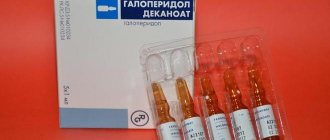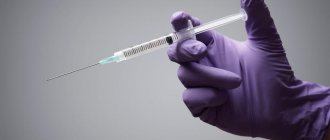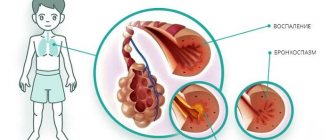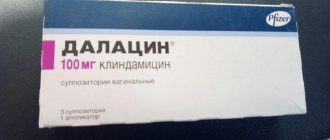0
Author of the article: Marina Dmitrievna
2019.02.24
76
Treatment-Drugs
"Arketal" is a non-steroidal anti-inflammatory drug. It has anti-inflammatory, analgesic and antipyretic effects. Before use, carefully study the description, list of indications and instructions for use of Arketal.
Appearance of the medication
Release form, packaging and composition of the drug Arketal Rompharm
Solution for infusion and intramuscular administration
transparent, colorless or slightly yellow.
| 1 ml | |
| ketoprofen | 50 mg |
Excipients
: ethanol 96% - 100 mg, propylene glycol - 400 mg, benzyl alcohol - 20 mg, sodium hydroxide - 8.5 mg, sodium hydroxide solution 10% or hydrochloric acid - up to pH 7.2±0.2, water for injection - up to 1 ml.
2 ml - dark glass ampoules (5) - contour cell packaging (2) - cardboard packs.
Analogs
Among similar drugs are:
| Name | Active ingredient | Price |
| Ketoprofen | Ketoprofen | 106 rubles for 20 tablets 100 mg |
| Diclofenac | Diclofenac | 10 ampoules - 45 rubles |
| Ketonal | Ketoprofen | 10 ampoules - 239 rubles |
One of the possible analogues of the drug
You need to make a choice in favor of an analogue if for some reason you cannot find Arketal.
Indications for use
Inflammatory and degenerative diseases of the musculoskeletal system:
- rheumatoid arthritis;
- psoriatic arthritis;
- Bechterew's disease (ankylosing spondylitis);
- gouty arthritis;
- osteoarthritis.
Intended for symptomatic therapy, reducing pain and inflammation at the time of use, does not affect the progression of the disease.
Pain syndrome:
- myalgia;
- ossalgia;
- neuralgia;
- tendonitis, bursitis;
- arthralgia;
- radiculitis;
- adnexitis;
- otitis;
- headache;
- toothache;
- pain due to cancer;
- post-traumatic and postoperative pain syndrome accompanied by inflammation.
Algodysmenorrhea, childbirth (as an analgesic and tocolytic agent).
Directions for use and doses
The drug is administered to adults
IV drip or IM. IM - 100 mg 1-2 times a day, IV drip - 100-200 mg in 100-500 ml of 0.9% sodium chloride solution. Infusions are carried out only in a hospital, no more than 300 mg over 0.5-1 hour.
The maximum daily dose is 300 mg.
Treatment with the drug is carried out for a short time (2-3 days). If necessary, treatment is continued with other dosage forms.
In elderly patients
The drug is recommended to be used in the minimum effective dose. Patients require regular monitoring because... Gastrointestinal bleeding is possible during NSAID therapy.
In patients with renal failure
The drug is recommended to be used in the minimum effective dose, which is then adjusted depending on the state of renal function.
Rules for administering the drug
The IM drug is administered deeply, slowly, into the upper outer quadrant of the buttock, under strictly aseptic conditions. Subsequent injections are administered alternately into both buttocks.
IV: 1) short-term infusion - from 100 to 200 mg of ketoprofen is diluted in 100 ml of 0.9% sodium chloride solution and administered over 0.5-1 hour; administration can be repeated every 8 hours for no more than 48 hours; 2) long-term infusion - from 100 to 200 mg of ketoprofen is diluted in 500 ml of infusion solution (0.9% sodium chloride solution, lactated Ringer's solution, dextrose solution) and administered over 8 hours; administration can be repeated every 8 hours for no more than 24 hours.
Due to the fact that ketoprofen is sensitive to light, the bottle or infusion bag should be covered with black paper or aluminum foil.
Side effect
From the digestive system:
NSAID gastropathy, abdominal pain, dyspepsia (nausea, vomiting, heartburn, flatulence, loss of appetite, diarrhea), stomatitis, liver dysfunction, change in taste.
From the nervous system:
headache, dizziness, insomnia, agitation, nervousness, drowsiness, depression, asthenia, confusion or loss of consciousness, migraine, peripheral neuropathy.
From the senses:
noise or ringing in the ears, blurred vision, conjunctivitis, dry mucous membrane of the eye, eye pain, conjunctival hyperemia, hearing loss, vertigo.
From the cardiovascular system:
increased blood pressure, tachycardia.
From the hematopoietic organs:
agranulocytosis, anemia, hemolytic anemia, thrombocytopenia, leukopenia.
From the urinary system:
edema syndrome, cystitis, urethritis, renal dysfunction, interstitial nephritis, nephrotic syndrome, hematuria.
Allergic reactions:
skin rash (including erythematous), urticaria, skin itching, rhinitis, angioedema, bronchospasm, exfoliative dermatitis, anaphylactic shock.
Local reactions:
burning or pain at the injection site.
Other:
increased sweating, hemoptysis, nosebleeds, myalgia, muscle twitching, shortness of breath, thirst, photosensitivity, with prolonged use in large doses - vaginal bleeding.
Overdose
Overdose was detected at doses of more than 2.5 g of ketoprofen.
Symptoms:
increased dose-dependent side effects: cramps, feeling of heaviness in the legs, increased blood pressure, ringing in the ears, blurred vision, rash, nausea, vomiting, epigastric pain, diarrhea, gastrointestinal bleeding, headache, dizziness, incoherence (incoherence), confusion, drowsiness, convulsions, coma, respiratory depression.
Treatment:
carry out symptomatic therapy. A specific antidote is unknown. Provide appropriate hydration, monitor renal clearance, and correct acidosis. If necessary, hemofiltration is used.
Contraindications for use
- complete or incomplete combination of bronchial asthma, recurrent polyposis of the nose and paranasal sinuses and intolerance to acetylsalicylic acid or other NSAIDs (including a history);
- peptic ulcer of the stomach and duodenum in the acute phase;
- ulcerative colitis in the acute phase;
- Crohn's disease;
- diverticulitis;
- peptic ulcer;
- hemophilia and other blood clotting disorders;
- active gastrointestinal bleeding;
- severe renal failure (creatinine clearance less than 30 ml/min);
- progressive kidney disease;
- severe liver failure or active liver disease;
- condition after coronary artery bypass surgery;
- confirmed hyperkalemia;
- inflammatory bowel diseases;
- children under 15 years of age;
- hypersensitivity to the components of the drug;
- hypersensitivity to other NSAIDs.
Carefully :
anemia, bronchial asthma, alcoholism, tobacco smoking, alcoholic cirrhosis of the liver, hyperbilirubinemia, liver failure, dehydration, sepsis, chronic heart failure, edema, arterial hypertension, blood diseases (including leukopenia), stomatitis, ischemic heart disease, cerebrovascular diseases, dyslipidemia /hyperlipidemia, diabetes mellitus, peripheral arterial disease, chronic renal failure (creatinine clearance 30-60 ml/min), a history of ulcerative lesions of the gastrointestinal tract, the presence of Helicobacter pylori infection, long-term use of NSAIDs, severe somatic diseases, simultaneous use of oral corticosteroids (including including prednisolone), anticoagulants (including warfarin), antiplatelet agents (including clopidogrel), selective serotonin reuptake inhibitors (including citalopram, fluoxetine, paroxetine, sertraline), old age.
Buy Arketal solution for intramuscular infusion 50 mg/ml 2 ml No. 10 in pharmacies
Arketal Rompharm Buy Arketal Rompharm in pharmacies DOSAGE FORMS solution for infusion and intramuscular administration 50 mg/ml
MANUFACTURERS K.O. Rompharm Company S.r.L. (Romania)
GROUP Anti-inflammatory drugs - propionic acid derivatives
COMPOSITION Active substance: ketoprofen - 50.0 mg.
INTERNATIONAL NON-PROPENTED NAME Ketoprofen
SYNONYMS Actron, Artrosilene, Artrum, Bystrumgel, Bystrumcaps, Ketonal, Ketonal Duo, Ketoprofen, Ketoprofen MV, Ketoprofen Organics, Ketoprofen-Verte, Ketoprofen-Vramed, Ketoprofen-Ratiopharm, Oki, Profenid, Fastum, Febrofid, Flamax, Flamax forte, F Lexen
PHARMACOLOGICAL ACTION Ketoprofen has anti-inflammatory, analgesic and antipyretic effects associated with suppression of the activity of cyclooxygenase (COX1 and COX2), which regulate the synthesis of prostaglandins (Pg). Pharmacokinetics. Absorption is fast, bioavailability is more than 90%. Plasma protein binding -99%. The time to reach maximum concentration is 15-30 minutes. The therapeutic concentration in the synovial fluid lasts 6-8 hours. It does not penetrate the blood-brain barrier (BBB) in a significant amount. It is almost completely metabolized in the liver by glucuronidation and has a “first pass” effect through the liver. Excreted by the kidneys, 60-80% - in the form of glucuronide in 24 hours.
INDICATIONS FOR USE Inflammatory and degenerative diseases of the musculoskeletal system: rheumatoid, psoriatic arthritis, ankylosing spondylitis, gouty arthritis, osteoarthritis. Intended for symptomatic therapy, reducing pain and inflammation at the time of use, does not affect the progression of the disease. Pain syndrome: myalgia, ossalgia, neuralgia, tendonitis, arthralgia, bursitis, radiculitis, adnexitis, otitis media, headache and toothache, in cancer, post-traumatic and postoperative pain syndrome accompanied by inflammation. Algodysmenorrhea, childbirth (as an analgesic and tocolytic agent).
CONTRAINDICATIONS Hypersensitivity (including to other NSAIDs), complete or incomplete combination of bronchial asthma, recurrent polyposis of the nose and paranasal sinuses and intolerance to acetylsalicylic acid or other non-steroidal anti-inflammatory drugs (including a history), gastric ulcer and duodenal ulcer intestines (exacerbation), ulcerative colitis (exacerbation), Crohn's disease, diverticulitis, peptic ulcer, hemophilia and other blood clotting disorders, active gastrointestinal bleeding; severe renal failure (creatinine clearance less than 30 ml/min), progressive kidney disease, severe liver failure or active liver disease, condition after coronary artery bypass surgery, confirmed hyperkalemia, inflammatory bowel diseases, children (up to 15 years). Carefully. Anemia, bronchial asthma, alcoholism, tobacco smoking, alcoholic cirrhosis of the liver, hyperbilirubinemia, liver failure, dehydration, sepsis, chronic heart failure (CHF), edema, arterial hypertension, blood diseases (including leukopenia), stomatitis, coronary heart disease (IHD), cerebrovascular diseases, dyslipidemia/hyperlipidemia, diabetes mellitus, peripheral arterial disease, chronic renal failure (CRF) (creatinine clearance 30-60 ml/min), history of ulcerative lesions of the gastrointestinal tract (GIT), presence of Helicobacter pylori infection , long-term use of NSAIDs, severe somatic diseases, simultaneous use of oral glucocorticosteroids (GCS) (including prednisolone), anticoagulants (including warfarin), antiplatelet agents (including clopidogrel), selective reuptake inhibitors serotonin (including citalopram, fluoxetine, paroxetine, sertraline), old age. Pregnancy and lactation period. The drug is contraindicated for use in the third trimester of pregnancy. In the first and second trimesters of pregnancy, the use of the drug is possible in cases where the potential benefit to the mother outweighs the potential risk to the fetus; use only under medical supervision. If it is necessary to use the drug during lactation, it is recommended to stop breastfeeding.
SIDE EFFECTS From the digestive system: NSAID gastropathy, abdominal pain, dyspepsia (nausea, vomiting, heartburn, flatulence, loss of appetite, diarrhea), stomatitis, impaired liver function, change in taste. From the nervous system: headache, dizziness, insomnia, agitation, nervousness, drowsiness, depression, asthenia, confusion or loss of consciousness, migraine, peripheral neuropathy. From the senses: noise or ringing in the ears, blurred vision, conjunctivitis, dry mucous membrane of the eye, pain in the eyes, conjunctival hyperemia, hearing loss, vertigo. From the cardiovascular system (CVS): increased blood pressure (BP), tachycardia. From the hematopoietic organs: agranulocytosis, anemia, hemolytic anemia, thrombocytopenia, leukopenia. From the urinary system: edema syndrome, cystitis, urethritis, renal dysfunction, interstitial nephritis, nephrotic syndrome, hematuria. Allergic reactions: skin rash (including erythematous), urticaria, skin itching, rhinitis, angioedema, bronchospasm, exfoliative dermatitis, anaphylactic shock. Local reactions: burning or pain at the injection site. Other: increased sweating, hemoptysis, nosebleeds, myalgia, muscle twitching, shortness of breath, thirst, photosensitivity, with long-term use in large doses - vaginal bleeding.
INTERACTIONS Pharmaceutically incompatible with tramadol solution. Reduces the effectiveness of uricosuric drugs, enhances the effect of anticoagulants, antiplatelet agents, fibrinolytics, ethanol, side effects of GCS and MCS, estrogens; reduces the effectiveness of antihypertensive drugs and diuretics. Combined use with other NSAIDs, corticosteroids, ethanol, corticotropin can lead to the formation of ulcers and the development of gastrointestinal bleeding, increasing the risk of developing renal dysfunction. Combined use with indirect anticoagulants, heparin, thrombolytics, antiplatelet agents, cefaperazone, cefamandole and cefotetan increases the risk of bleeding. Increases the hypoglycemic effect of insulin and oral hypoglycemic drugs (dose recalculation is necessary). Inducers of microsomal liver enzymes (phenytoin, ethanol, barbiturates, rifampicin, phenylbutazone, tricyclic antidepressants) increase the production of hydroxylated active metabolites. Co-administration with valproic acid causes disruption of platelet aggregation. Increases plasma concentrations of verapamil and nifedipine, lithium preparations, methotrexate. Myelotoxic drugs increase the manifestations of hematotoxicity of the drug.
METHOD OF APPLICATION AND DOSAGE Intravenous (drip) (i.v.), intramuscular (i.m.). Adults. IM - 100 mg 1-2 times a day. IV, drip - 100-200 mg in 100-500 ml of 0.9% sodium chloride solution. Infusions are carried out only in a hospital, no more than 300 mg over 0.5-1 hour. Treatment with the drug is carried out for a short period (2-3 days). If necessary, continue treatment with other dosage forms. The maximum daily dose is 300 mg of ketoprofen. For elderly patients, the minimum effective dose is recommended. Patients should be monitored regularly because... Gastrointestinal bleeding is possible during therapy with NSAIDs. For patients with renal impairment, the minimum effective dose is recommended and then adjusted based on renal tolerability. Method of administration. Intramuscularly - injected deeply, slowly into the upper outer square of the buttock, under strictly aseptic conditions. Subsequent injections are administered alternately into both buttocks. Intravenously. Short-term infusion: from 100 to 200 mg of ketoprofen is diluted in 100 ml of 0.9% sodium chloride infusion solution and administered over 0.5 -1 hour; administration can be repeated every 8 hours for no more than 48 hours. Long-term infusion: 100 to 200 mg of ketoprofen is diluted in 500 ml of solution for infusion (0.9% sodium chloride, Ringer's lactate, dextrose) and administered over 8 hours; administration can be repeated every 8 hours, for no more than 24 hours. Due to the fact that ketoprofen is sensitive to light, the bottle or infusion bag should be covered with black paper or aluminum foil.
OVERDOSE Overdose was detected at doses greater than 2.5 g of ketoprofen. Symptoms manifest themselves as an increase in dose-dependent side effects: cramps, feeling of heaviness in the legs, high blood pressure, ringing in the ears, blurred vision, rash, nausea, vomiting, epigastric pain, diarrhea, gastrointestinal bleeding, headache, dizziness, incoherence (incoherence), confusion, drowsiness, convulsions, coma, respiratory depression. Treatment is symptomatic; a specific antidote for ketoprofen is unknown. Provide appropriate hydration, monitor renal clearance, and correct acidosis. If necessary, hemofiltration is used.
SPECIAL INSTRUCTIONS During treatment, it is necessary to monitor the peripheral blood picture and the functional state of the liver and kidneys. If it is necessary to determine 17-ketosteroids, the drug should be discontinued 48 hours before the study. The use of ketoprofen can mask the signs of an infectious disease. If renal or liver function is impaired, dose reduction and careful monitoring are necessary. To reduce the risk of developing adverse events from the gastrointestinal tract, the minimum effective dose should be used over a minimum short course. During the treatment period, care must be taken when driving vehicles and engaging in other potentially hazardous activities that require increased concentration and speed of psychomotor reactions.
STORAGE CONDITIONS Store in a dark place, out of reach of children at a temperature not exceeding 25 C.
special instructions
During treatment, monitoring of the peripheral blood picture and the functional state of the liver and kidneys is necessary. If it is necessary to determine 17-ketosteroids, the drug should be discontinued 48 hours before the study. The use of ketoprofen can mask signs of an infectious disease. If renal and liver function is impaired, a dose reduction and careful observation are necessary To reduce the risk of developing adverse events from the gastrointestinal tract, the minimum effective dose should be used in a minimum short course. Impact on the ability to drive vehicles and operate machinery
During the treatment period, care must be taken when driving vehicles and engaging in other potentially hazardous activities that require increased concentration and speed of psychomotor reactions.
Drug interactions
Pharmaceutically incompatible with tramadol solution. Reduces the effectiveness of uricosuric drugs. Enhances the effect of anticoagulants, antiplatelet agents, fibrinolytics, ethanol, side effects of gluco- and mineralocorticoids, estrogens. Reduces the effectiveness of antihypertensive drugs and diuretics. Combined use with other NSAIDs, corticosteroids, ethanol, corticotropin can lead to to the formation of ulcers and the development of gastrointestinal bleeding, to an increased risk of developing renal dysfunction. Combined use with indirect anticoagulants, heparin, thrombolytics, antiplatelet agents, cefoperazone, cefamandole and cefotetan increases the risk of bleeding. Increases the hypoglycemic effect of insulin and oral hypoglycemic drugs (dose recalculation is necessary). Inducers of microsomal liver enzymes (phenytoin, ethanol, barbiturates, rifampicin, phenylbutazone , tricyclic antidepressants) increase the production of hydroxylated active metabolites. Co-administration with valproic acid causes a violation of platelet aggregation. Increases the plasma concentration of verapamil and nifedipine, lithium drugs, methotrexate. Myelotoxic drugs increase the manifestations of hematotoxicity of the drug.
Pharmacokinetics
Suction
Absorption is fast. Tmax in plasma - 15-30 min. Bioavailability - more than 90%.
Distribution
Plasma protein binding - 99%. Therapeutic concentration in synovial fluid lasts 6-8 hours.
It does not penetrate the BBB in significant quantities.
Metabolism
Almost completely metabolized in the liver by glucuronidation. Subject to a first-pass effect through the liver.
Removal
Excreted by the kidneys - 60-80% in the form of glucuronide in 24 hours.








